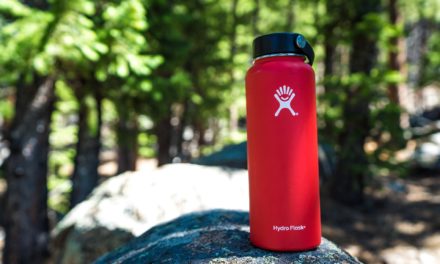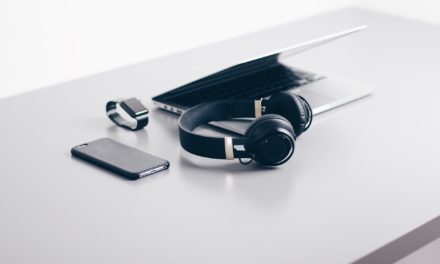[ad_1]
Some people, including myself, have kidney stones every few years and have learned to deal with the unpleasant events on their own terms without having to seek medical attention. Most incidents last only a few hours, and in some extreme cases, for several days, however it is entirely up to the individual on how best to manage these situations depending on their own pain threshold, tolerance, and motivation to avoid associated medical costs. This article is directed to those who desire to deal with their kidney stones themselves and is offered for information purposes only. It is not intended as medical advice but rather as a description of my own experience with them. You are strongly advised to consult with a licensed care provider before attempting to implement anything that may affect your health.
As the body processes food to gain energy and repair tissue, it takes what it needs and directs all the waste products in the bloodstream to the kidneys for elimination through the urine stream. Kidney stones generally form in people when certain substances in the urine become highly concentrated such as phosphorus, calcium, and oxalate. When kidney stones are forming, people often feel them initially as a soreness or pressure in the kidney region of the back which progresses to an ache, and eventually it becomes a severe back pain when the stone moves through the ureter. It has often been said that the pain from kidney stones is the closest thing to labor and birth pains that a man can feel, so ladies maybe there is some justice in the world after all.
There are basically four major types of kidney stones, based upon their chemical composition:
1. Uric Acid Stones – The body forms these types of stones when the urine is consistently acidic. Diets that are rich in purines, substances found in animal protein such as fish, meats, and shellfish tend to increase uric acid in urine. When uric acid becomes concentrated in urine, then it can settle in the kidney to form a stone by itself, or with calcium. High uric acid in the urine has also been linked to the cause of gout.
2. Calcium Stones – These are the most common type of kidney stone and occur in two forms: calcium phosphate and calcium oxalate. Calcium phosphate stones are created by the combination of high urine calcium and alkaline urine (high pH). Calcium oxalate stones are much more common. They are usually formed by high calcium and high oxalate excretion. Care providers often suggest people with these kind of stones eliminate as many foods from their diet that are high in phosphate and oxalate.
3. Cystine stones – These type of kidney stones result from a genetic disorder that causes cystine to leak through the kidneys and into the urine, forming crystals that accumulate to form stones.
4. Stuvite stones – These type of kidney stones result from kidney infections. Individuals who can eliminate infected stones from their urinary tract and stay infection-free can usually eliminate or reduce further occurrences.
The vast majority of kidney stones are small and can be passed out through the urine. Your physician may recommend reducing the load on the kidneys by ingesting more fluids, especially water. He may also recommend taking a diuretic to increase the urine flow. The stones get dissolved in the excess fluid and are then easily eliminated in the urine stream. Drinking a few beers has even been known to help. Generally it takes from six to eight glasses of water a day consumed in regular intervals. If the urine is a pale-yellow color, it indicates that you are consuming an adequate amount of water.
People with kidney stones are in so much pain that they often lie down and wait for nature to take its course; however, this is not a good idea. Movement and activity are better choices to hasten the passing of a kidney stone. I have actually gone for walks, road my bicycle, and used a rowing machine to create extra movement in the back muscles and tissues around the kidney area once I feel one coming on. If the stone is the size of a grain of rice, for example, it will take several hours to work its way through the ureter and any exercise helps speed up the process.
While increasing fluid intake, it is equally important to not consume foods that restrict or decrease the flow of urine such as caffeine. Beverages such as coffee tend to dehydrate the body and reduce urine production and flow, while actually encouraging the formation of new stones due to concentrated urine.
Large sized kidney stones may require surgery or removal by ultrasound, which uses sonic bursts to break them up into smaller pieces. Before expensive medical procedures are used, however, many kidney stones can be chemically dissolved using acidic acid from lemons and grapefruit. Make some strong lemonade without sugar or sweetener, using one real lemon per quart. To this mixture add diet cranberry juice for flavor and drink as much as possible. This drink will breakdown the kidney stones within hours and hasten their passing with less pain.
To alleviate the pain, you can take aspirin, acetaminophen, and other over-the-counter pain medication along with a nice long hot shower every twelve hours. If your shower head has a pulse action setting, then use it directly on your kidney region with as much hot water as you can tolerate. Massage your kidneys for at least ten minutes using this procedure and the movement will expand the ureter and relieve some of the pain. Following the hot shower, use a vibrating massager on your kidneys for at least thirty minutes and then apply an electric heating pad to the kidneys for several hours.
It is essential to identify what kind of kidney stones you have, so you can develop procedures to prevent the formation of future events. Every time you urinate, make sure you do it through a strainer or filter held over the toilet. An old pair of pantyhose draped inside a milk jar, or any other wide mouth bottle, can be used for this purpose as well. Once you have captured the kidney stone, then put it in a plastic bag or used prescription container and deliver it to your doctor. He will be able to forward it to a lab and analyze its composition and prescribe a treatment to eliminate future kidney stones.
Typical treatment recommendations based on the specific type of kidney stone include the following procedures:
Calcium Oxalate Stones
- reduce animal protein, such as processed meats, eggs, and fish
- get enough calcium from a proper diet or take calcium supplements with food. People who form calcium oxalate stones should include 800 mg of calcium in their diet every day, not only for kidney stone prevention but also to maintain adequate bone density.
- avoid foods high in oxalate, such as spinach, asparagus, grapes, almonds, rhubarb, nuts, wheat bran, and cinnamon-apple cider
- reduce sodium and ingest more potassium from bananas. This is a good strategy. Reducing sodium intake from salt is preferred over reducing calcium intake from milk and dairy products.
Calcium Phosphate Stones
- reduce animal protein and purines in your diet
- get enough calcium from your diet or take calcium supplements with your food.
- reduce sodium and ingest more potassium as noted above
- According to the U.S. Department of Agriculture, the U.S. recommended dietary allowance (RDA) of sodium is 2,300 milligrams (mg), but the average American intakes around 3,400 mg. The risk of kidney stones increases proportionately with increased daily sodium consumption.
Uric Acid Stones
- limit animal protein
- ask your physician to prescribe Allopurinol medication, or equal
Staying adequately hydrated each day is the best strategy to help prevent most types of kidney stone formation. Health care providers and athletic trainers generally recommend people drink 2 to 3 liters of fluid a day, enough to create at least 2 liters of urine daily. People with cystine stones should drink even more. Although water is best, other fluids may also help prevent kidney stones, such as citrus drinks containing acidic acid and surprisingly, beer. Now you can tell people when you are enjoying your next beer that you are actually just taking your medicine. It works for me.
[ad_2]
Source by Dave Salois






